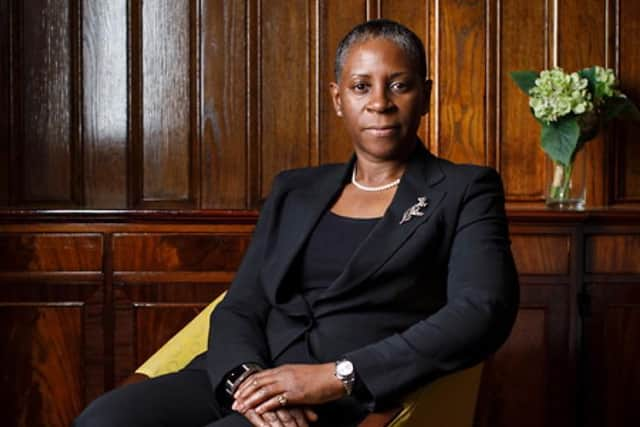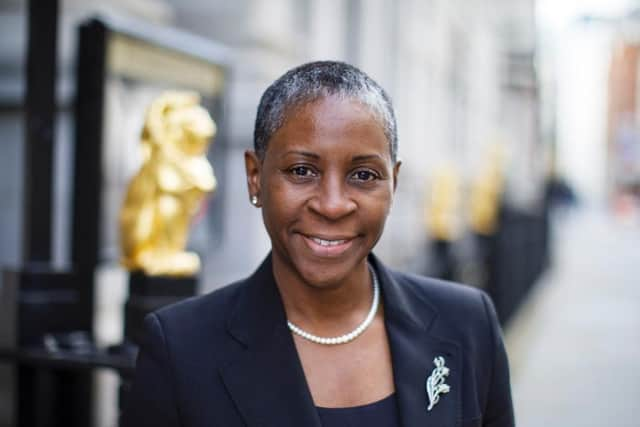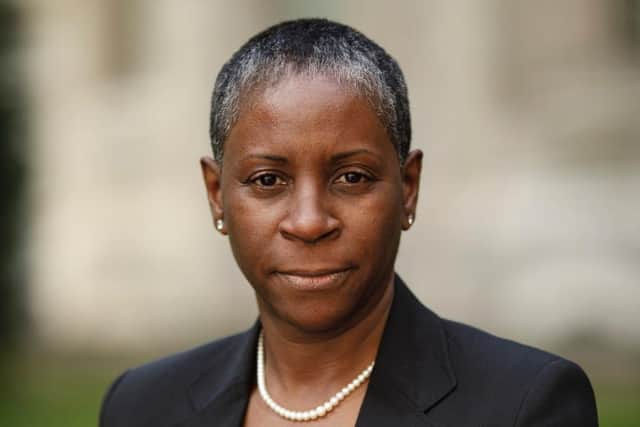Legal profession still lacking diversity at upper echelons of the profession - Law Society boss Stephanie Boyce
Stephanie Boyce, inset, told The Yorkshire Post that while the legal profession was currently very diverse at the point of entry, this diversity begins to wane nearer to the top of the sector.
Ms Boyce, the sixth woman and the first person of colour to be president of the Law Society in its almost 200-year history, was speaking during a visit to Leeds as part of her tenure in office.
Advertisement
Hide AdAdvertisement
Hide AdShe said: “There is still a long way to go and still more to be done.


“In terms of the low end of the profession we are very diverse. In 1978 there were 5,000 women solicitors. We have come a long way. It is only 100 years that women have been able to practice law.
“If you think where we were in 1978, a woman could barely get a mortgage in her own name.”
Currently, 52 per cent of practicing solicitors are female but only 31-35 per cent are partners in private practice. Meanwhile, 17.5 per cent of practicing solicitors are from a black, Asian or minority background.
Advertisement
Hide AdAdvertisement
Hide AdBut while these figures may be on a par with the wider population, it begins to become less representative the higher you look at the profession.


“When you break that down even further, 0.8 per cent are from a Black Caribbean background, 1.8 per cent from a Black African background, 10 per cent are Asian,” she said.
“Five per cent identify as LGBTQ+ and just under 17 per cent identify as having a disability or a mental health issue.
“Only eight per cent of partners in 50 or more partner firms are from a black, Asian and minority background and that figure has only changed by one per cent since 2014.
Advertisement
Hide AdAdvertisement
Hide Ad“So we are very diverse at entry. Women make up 63 per cent at entry. But whatever your characteristic we are not reaching the senior heights of our profession.”


Ms Boyce said that the lack of representation around female partners owed its explanation to women taking breaks from their career to start a family and then finding it difficult to re-enter the profession.
She added: “For black, Asian and minority people it is that sense of wellbeing, not belonging and not feeling included.
“If you happen to be black or Asian you will leave the profession two years earlier than your white counterparts.
Advertisement
Hide AdAdvertisement
Hide Ad“It is not just the solicitor profession, it is the legal profession.
“We have five High Court judges who are BME, that is not reflective of our society.”
Ms Boyce, speaking from the offices of Leeds legal firm Thrive, said that the Law Society would continue to spread this message and that more needed to be done to teach schoolchildren about the legal profession.
Comment Guidelines
National World encourages reader discussion on our stories. User feedback, insights and back-and-forth exchanges add a rich layer of context to reporting. Please review our Community Guidelines before commenting.
